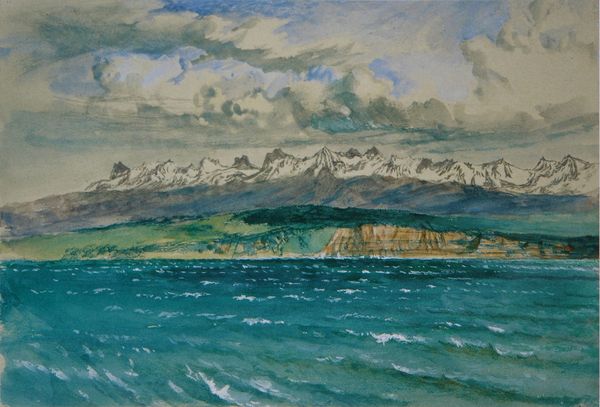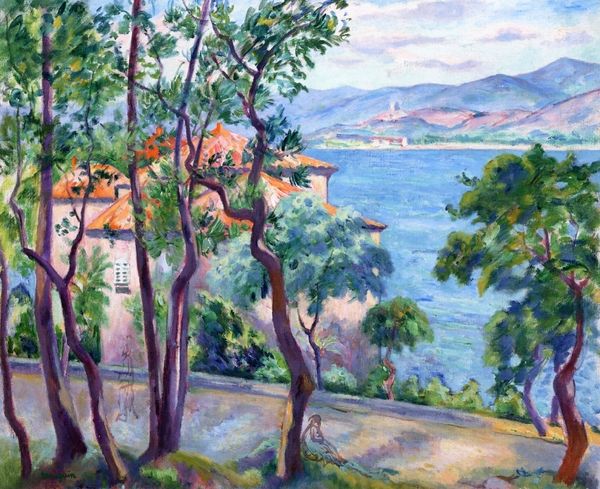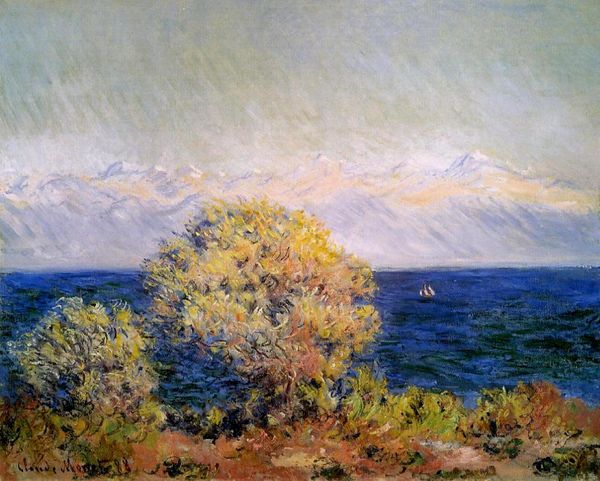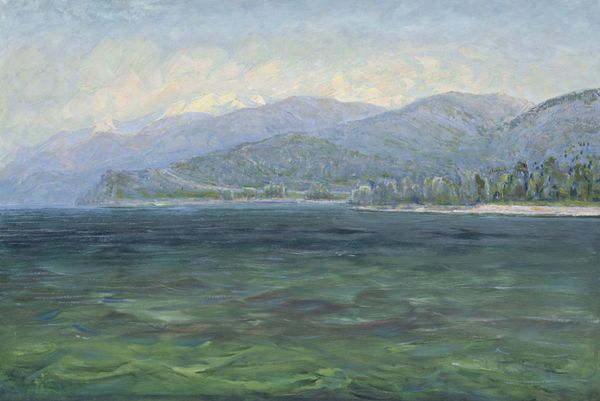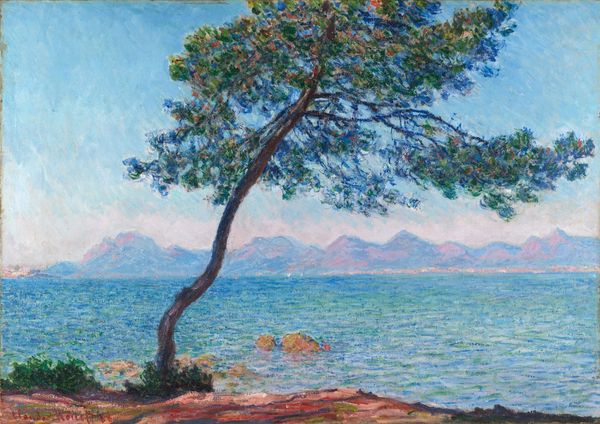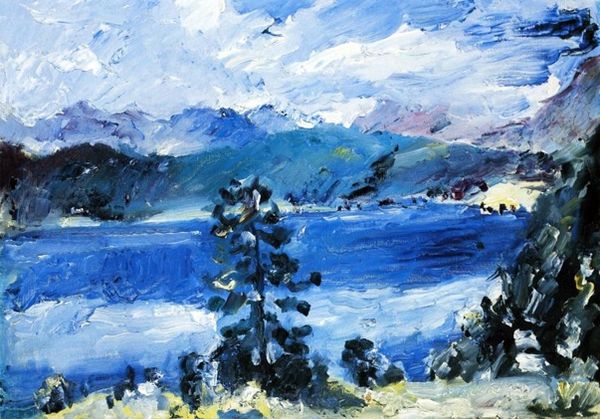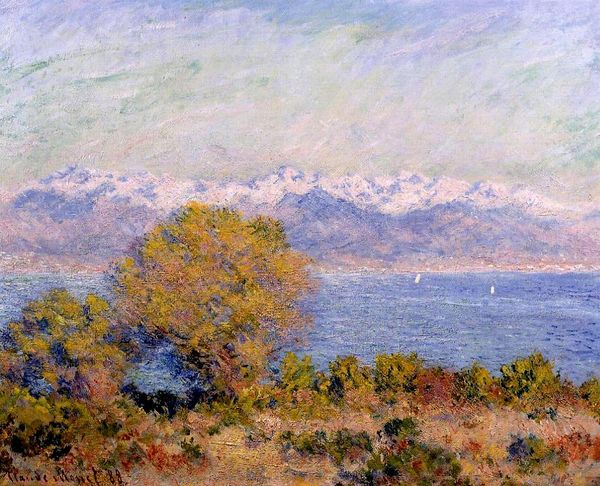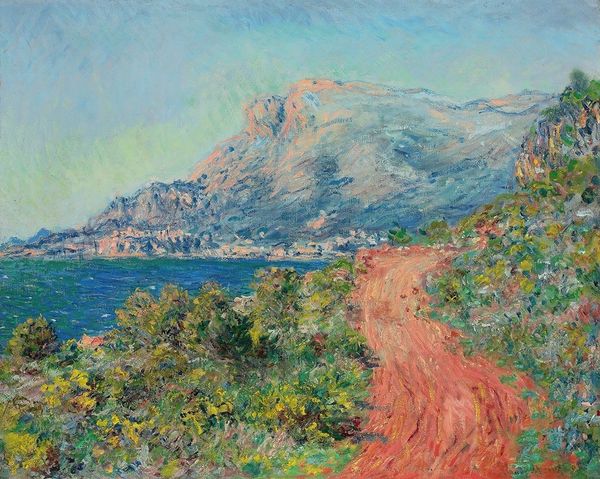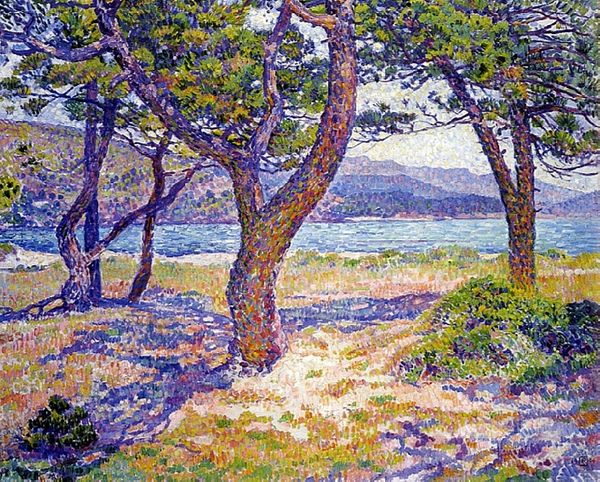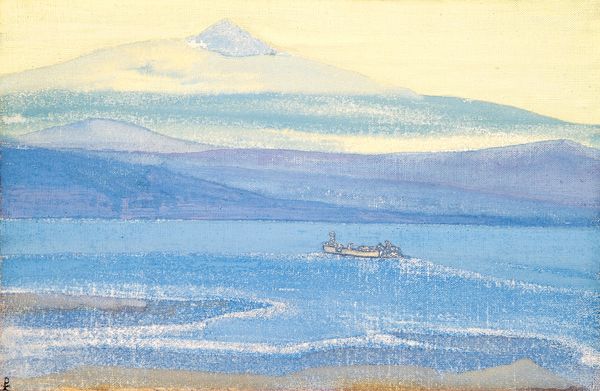
painting, plein-air, oil-paint
#
sky
#
painting
#
impressionism
#
plein-air
#
oil-paint
#
landscape
#
impressionist landscape
#
nature
#
mountain
#
seascape
#
natural-landscape
#
nature
Dimensions: 91.7 x 65 cm
Copyright: Public domain
Curator: The hazy blues and greens of Monet’s "View of Ventimiglia," painted in 1884, evoke such tranquility. I wonder what caught Monet's eye. Editor: Immediately, the sheer volume of paint grabs me. You can practically feel the impasto technique, the thick brushstrokes attempting to capture the transient effects of light. Did Monet bring this work back to his studio to labor over? Curator: Given that it’s an en plein air piece, painted on site, much of the materiality derives directly from an engagement with the landscape, light, and weather in Ventimiglia. Think of the weight of transporting his equipment, setting up an easel amidst nature. Editor: The placement of the town, almost clinging to the mountainside in the distance, really speaks to the human struggle for connection and a place in nature. How has this historical relationship evolved with environmental changes caused by industrial development? Curator: The brushstrokes are rapid, suggesting a constant need to catch the shifting nuances of light as the day progressed. Notice how the paint itself becomes the very thing it depicts, creating a world that appears to vibrate and breathe. It isn't merely representational. Editor: The blue range also gives it a cold atmosphere. Looking at it through a feminist lens, I see that in many depictions of landscapes, it echoes a historical association between nature and femininity. Does Monet perhaps subconsciously fall into that? Curator: Interesting point. But focusing solely on gender, do we lose sight of the technical challenges he conquered here? The labor involved in mixing pigments to achieve this hazy quality. His radical decision to render the distant town as blurred strokes rather than precise architecture speaks volumes. Editor: But labor doesn't exist in a vacuum. Artworks often serve a propagandistic purpose; could this landscape have been commodified to serve nationalistic ideas? Also, Monet, though progressive in his technique, belonged to a particular social stratum, impacting the stories he could depict, no? Curator: That tension you mentioned makes me appreciate the sheer ingenuity in how he manipulated the oil paint, embracing texture to portray his experience, without which this natural, serene effect could have easily been lost! Editor: True. Considering all these different aspects adds complexity. Looking at the interplay of the elements, and questioning his personal background really changes how we interact with his "View of Ventimiglia".
Comments
No comments
Be the first to comment and join the conversation on the ultimate creative platform.


